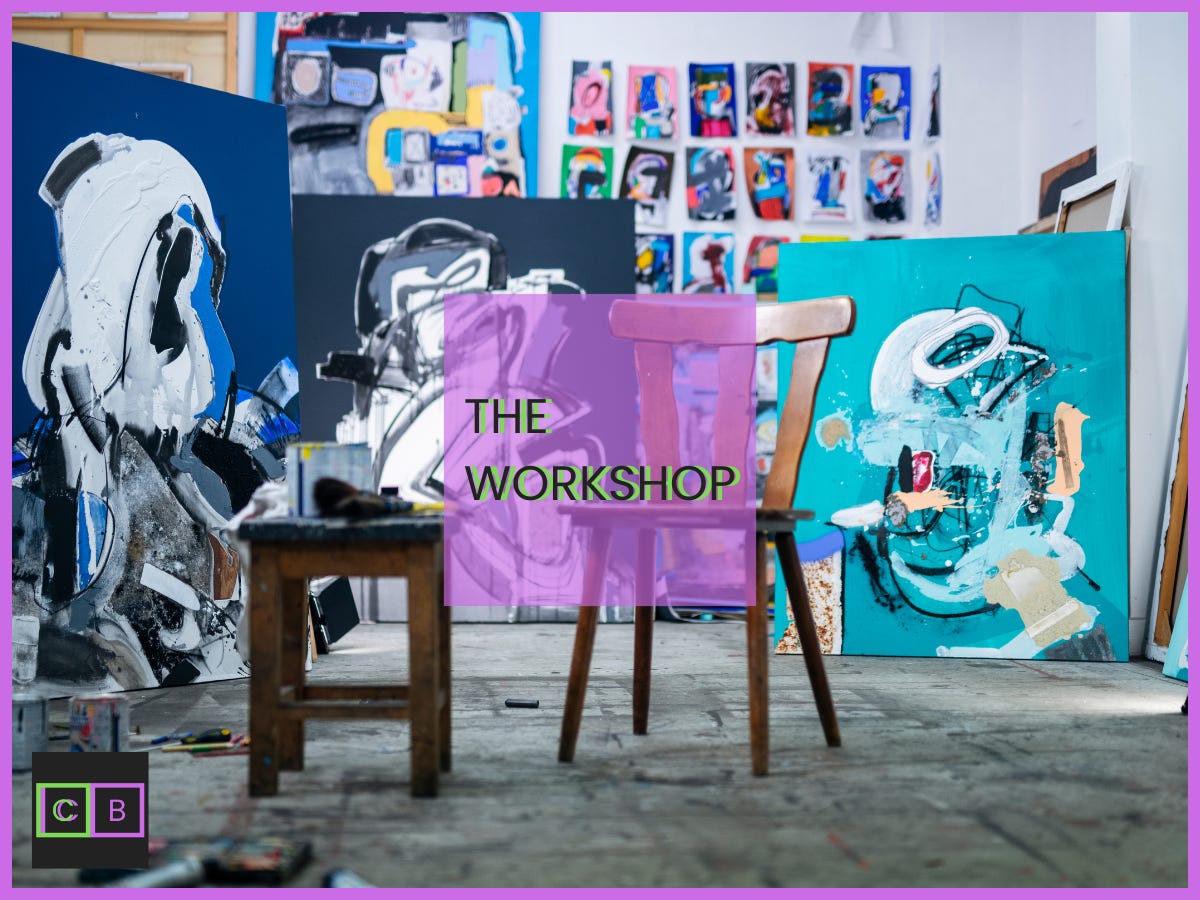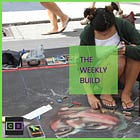The Introvert’s Guide to Selling Creative Work
I'm an introvert who's learned how to sell—without pretending to be extroverted. Here's how I do it.
Most creatives I know hate selling.
In fact, many creatives avoid building a business because of the mere thought of selling.
I get it. We think of selling as talking. As presenting, persuading, influencing—maybe even manipulating—with words that come out of our mouths.
We think we have to be extroverted to be good at sales.
We don't. I'm living proof.
I’m an introvert who’s learned to play the role of an extrovert when I need to. I can be a motivational speaker, an energetic professor, a networker in a room full of strangers.
But I’m not great at it. Pretending to be someone you’re not is hard work and it’s exhausting.
But playing the role of a salesperson doesn’t exhaust me. It feels natural, despite my introversion.
Why?
Because the image we conjure when we imagine selling—is wrong.
The right image for you selling your work is…well…you. Not some version of you that feels uncomfortable or draining. It’s the unique and authentic you who you are.
Google “sales books” and you'll find thousands of different “systems” being sold as “the best way” to sell. If all of those authors found success with a different way of selling—there can't be one best way.
Which means you get to choose a sales approach that suits you. One that feels comfortable instead of scary or inauthentic.
In today’s Workshop, I’ll show you an approach to sales that feels natural to me as an introvert. I’ll also give you a list of 15 questions that I use to make sales conversations less scary.
The Real Role of Sales Conversations
You’re right to feel uncomfortable about becoming that pushy salesperson you don’t want to be. Your buyers don’t want that either. You can read more about why your buyers are so savvy here:
So what do buyers want?
They want you. And I don’t just mean you as salesperson. I mean you as the creator behind your work.
Creative businesses have a significant advantage in this respect. Buyers don’t just buy your work. They buy the story behind it. That story—is your story, the basis of your brand as an artist.
If you were to show up as a different person for sales conversations, buyers would see right through the show. You’d actually decrease the likelihood that they’d ever buy from you.
So getting good at sales starts with leaving behind your preconceived notions about what sales conversations do for your buyers. You’re not there to convince them to buy. You’re simply there to represent your work as its creator. To add depth to it through your story. And, most importantly from a sales perspective, to connect your story to what they need. To the reason they’re shopping for creative work in the first place.
So successful sales conversations look less like persuasive presentations and more like two humans connecting and enjoying each others’ stories.
How do you do start? Your buyer always goes first. Because you won’t know how to connect your story and your work to what they need if you don’t know their story.
Good Selling Is More Listening than Talking
I've written about the importance of becoming a student of your customers to build a successful business. You do this with customer discovery which is just interviewing ideal customers to learn about who they are, what they need, and how they buy. You can learn more about customer discovery here:
The start of successful sales conversations is a similar learning exercise. In fact, it’s often called “sales discovery.” You start by learning about the person in front of you instead of talking about your work or yourself.
Sales discovery uncovers why this specific person in front of you has met you at this moment. It tells you who they are, what they need, and what’s going on in their head as they contemplate buying your work. When you start with discovery in these three areas, you learn—in their own words—what conditions would lead to a successful sale.
Knowing who they are tells you how you might connect with them personally through shared experiences.
Knowing what they need tells you how your work might enhance their life.
Knowing what they’re thinking as they decide to buy tells you if what you’re selling is a good fit for them because of details like price, use, or sizing for your work.
Sales discovery also tells you if you aren’t a good fit for them. So you can decide to bow out from the sale or even to point them in the direction of another creative who might be better.
There’s no hard and fast rule but my most successful sales conversations are at least 60% listening and 40% talking. And most of the talking from me is asking questions to learn more about who they are, what they need, and what they’re thinking.
I only tell my story after two conditions are met:
I can confidently connect my story to who they are, what they need, and what they’re thinking.
I genuinely believe buying is a good idea for them instead of something I need to persuade them to do against their best judgement.
When I do talk, I simply tell my story (or the story about whatever I’m selling) as one human to another. In a way that feels natural to me in the moment. I don’t have a magic, one-size-fits-all formula to pitching. It’s always tailored to the person sitting across from me and the flow of the conversation we’re having. That’s something that comes with practice.
Planning Sales Discovery
I’m comfortable with sales conversations because I’ve learned that being my awkward, introverted self works pretty well. But I also prepare for them. I know exactly what questions to ask before any conversation starts.
Over the course of my 25 year career, I’ve sold a lot of different products and services to everyone from consumers to CEOs of major corporations. My approach to sales discovery works across all of them because every sales conversation has one thing in common: I’m selling to a human.
It doesn’t matter if I’m selling art to a passerby at an art fair or tech consulting to a CEO in a boardroom. The sale will be successful or not based on my ability to understand the human across from me and connect with them on a personal level.
So I have 15 questions that I use to help me prepare for every sales conversation, no matter what I’m selling or who I’m selling to. You can download my list here:
This Week
This week, download the list of questions and start practicing sales discovery. Hopefully you’ve got a real conversation planned for this week. If not, practice with a friend to help build confidence.
The more you practice, the more comfortable you’ll feel with selling.
You’ll start to feel more like yourself.
Which is exactly who your buyers want to meet.
Have thoughts, questions, or an “aha” moment?
Reply to this email or leave a comment. I read every message and love hearing how your creative business is unfolding. Your insight might even shape a future edition of The Workshop.
New to The Creative Build?
I publish two posts a week to help creatives turn their talent into thriving, independent businesses:
The Weekly Build (Fridays): Advice, mindset, confidence
The Workshop (Mondays): Tools and frameworks you can put to work
Subscribe to follow along. You’re not building alone.




